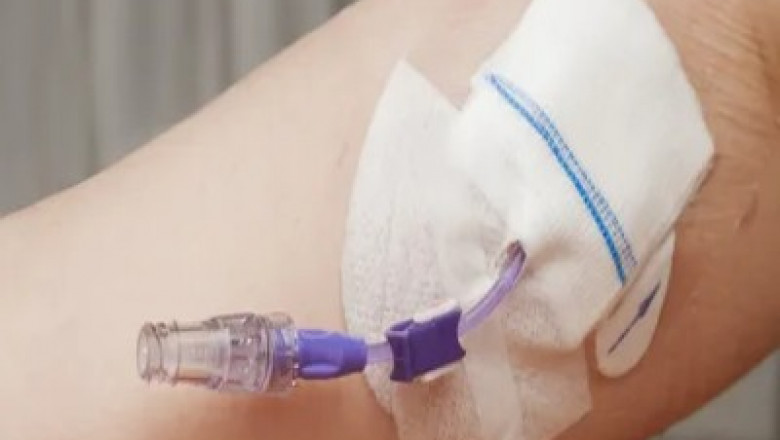views
What are PICCs?
A peripherally inserted central catheter, or PICC, is a long, thin, flexible catheter that is inserted into a vein in the arm and advanced until the tip resides in a large vein near the heart. PICCs provide dedicated access to the central circulation without requiring a central line placed directly in the neck, chest, or groin.
How are PICCs inserted?
Peripherally Inserted Central Catheters are typically inserted into the basilic or cephalic veins of the upper arm. The site is cleaned and numbed with local anesthesia. Using ultrasound or anatomical landmarks for guidance, the clinician then threads the catheter through the upper arm vein until the tip terminates in the superior vena cava or other large central veins. Once positioned correctly, the catheter is secured to the skin with sutures or adhesive dressings.
What benefits do PICCs provide?
Compared to traditional centrally inserted catheters, PICCs offer several advantages that have contributed to their increasing use. First, they are less invasive to place since insertion occurs through a peripheral arm vein rather than directly into a central neck or chest vessel. This reduces risk of complications and makes placement more comfortable for patients. PICCs also tend to remain in place longer than peripheral intravenous catheters since they terminate in the large central vessels rather than smaller arm veins. This prolonged dwell time makes PICCs suited for patients requiring IV access for several weeks. Their lower profile design also allows for greater mobility, bathing, and comfort compared to other central access devices.
How long can a PICC remain in place?
When cared for properly, PICCs can reliably stay in place for weeks or even months. The optimal dwell time depends on the individual clinical situation and risk of catheter-related complications like infection or thrombosis. For short-term uses like antibiotic treatment courses, PICCs are usually removed within 2-4 weeks once therapy ends. However, for patients requiring prolonged parenteral nutrition, chemotherapy or other long-term infusions, PICC dwell times exceeding 3-6 months are not uncommon. Regular assessment helps determine whether the line remains functional and safe to continue using.
What complications can arise from PICCs?
Like any indwelling catheter, PICCs do carry risks if infections set in or thrombi form within the line over time. Some potential complications of PICC use include:
- Infection: Bacteria can migrate along the outside of the catheter or enter through connections, increasing risk of localized infection at the insertion site or systemic bloodstream infection. Careful sterile technique during line access and maintenance helps minimize this risk.
- Thrombosis: Prolonged indwelling of any catheter predisposes to formation of clots within the line or adjacent vessels. This is more common if catheters become occluded or malfunctioning. Regular line flushing helps prevent clots.
- Leakage: If connections are not fully tightened or the catheter material degrades, leaks can potentially occur where the catheter enters the skin or joins tubing/lines. This puts the sterile pathway at infection risk.
- Accidental Removal or Dislodgement: Over time the fixation sutures or dressings holding the PICC in place can fail, particularly if lines are pulled on accidentally. This can lead to the tip migrating from its placed position or requiring complete replacement.
- Air Embolism: Introduction of air into a PICC during flushing or medication administration puts the patient at risk of an air embolism, which can potentially travel to the heart or lungs and cause catastrophic complications. Strict attention to technique is important.
Who places PICCs?
Insertion of PICCs is usually performed by specially trained healthcare professionals such as vascular access nurses, radiologists, or interventional radiologists. Their skills utilizing ultrasound or fluoroscopy guidance help ensure the catheter tip is advanced to the proper location. Ongoing maintenance and dressing changes are then handled at the bedside by nurses once training is complete. Having credentialed experts perform both insertion and subsequent line care optimizes outcomes and safety.
How are PICC insertions monitored?
To verify correct placement, chest x-rays are normally obtained immediately after insertion while the patient is still in the procedure room. This confirms tip position in a large central vein rather than accidental placement in the right atrium or other unintended location. Periodic chest films may also be taken throughout the indwelling period to ensure the PICC remains stationary and has not migrated. Echocardiography or fluoroscopy can provide accurate real-time monitoring as an alternative to x-rays when assessing PICC position.
What are some nursing considerations for PICC care?
Nurses play a critical role in maintaining PICC line safety and function between clinician access. Key nursing interventions include:
- Strict sterile technique during access and dressing changes to prevent infection
- Daily inspection of the insertion site for redness, swelling or drainage which could signal impending issues
- Regular flushing per protocol using recommended solution, volume, and pressure to prevent blockages
- Evaluation of catheter patency by extracting a small amount of blood back through the line with each accessed to ensure flow
- Secure fixation of the catheter and any connections to avoid accidental removal or dislodgement
- Patient/family education on signs of complications and proper PICC hygiene is also crucial
Get This Report in Japanese Language: 末梢挿入型中心静脈カテーテル
Get This Report in Korean Language: 말초 삽입 중앙 카테터
About Author:
Ravina Pandya, Content Writer, has a strong foothold in the market research industry. She specializes in writing well-researched articles from different industries, including food and beverages, information and technology, healthcare, chemical and materials, etc. (https://www.linkedin.com/in/ravina-pandya-1a3984191)






















Comments
0 comment